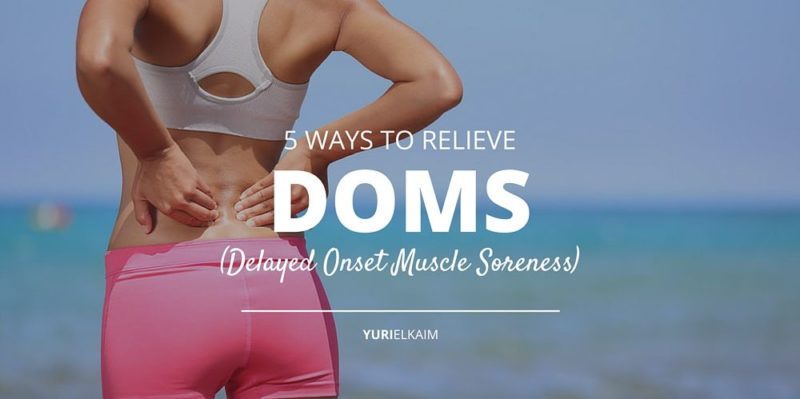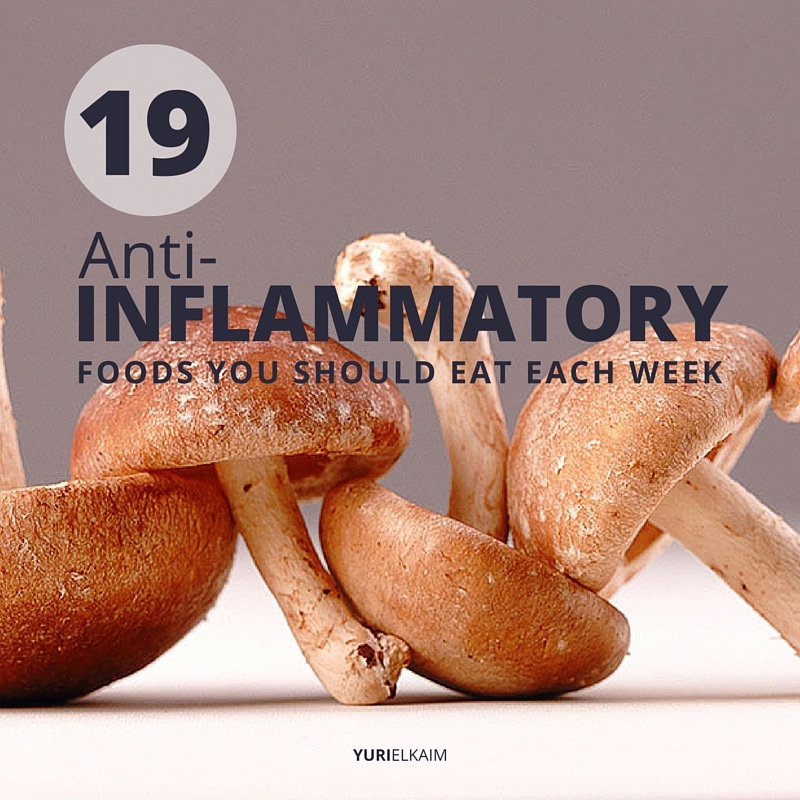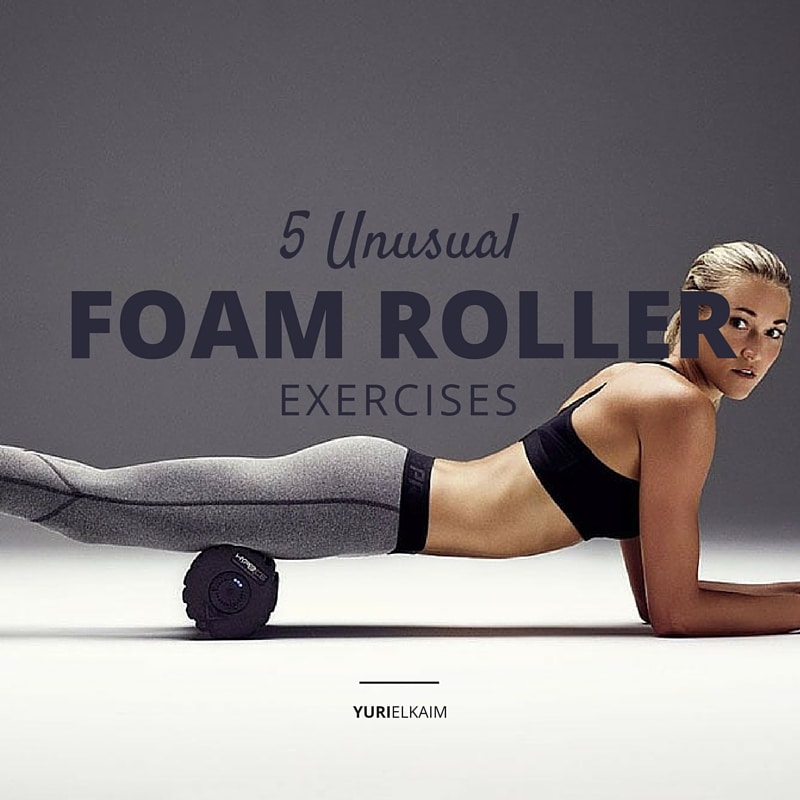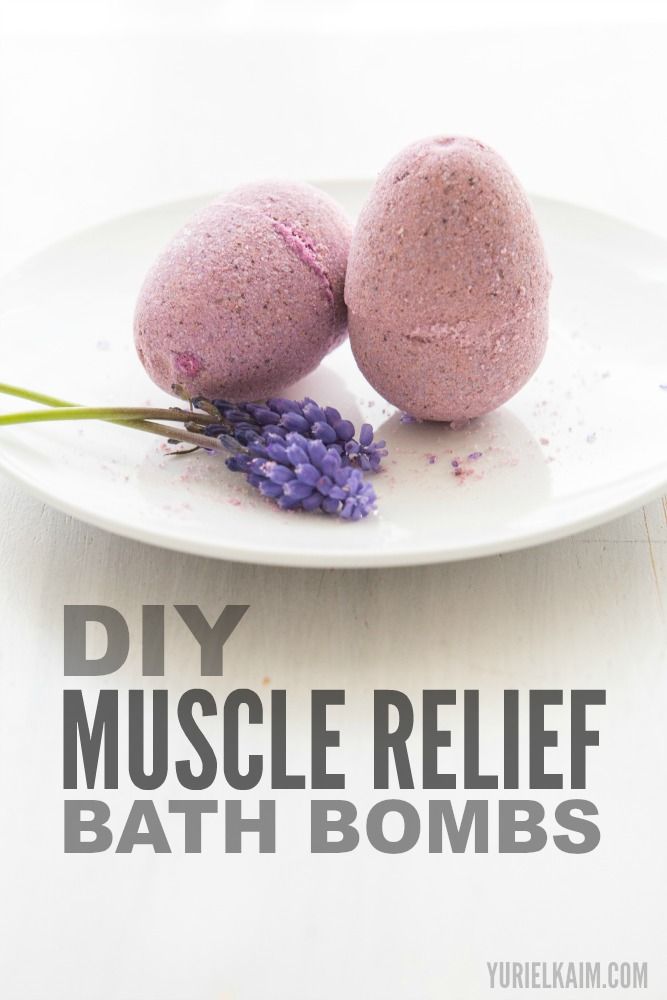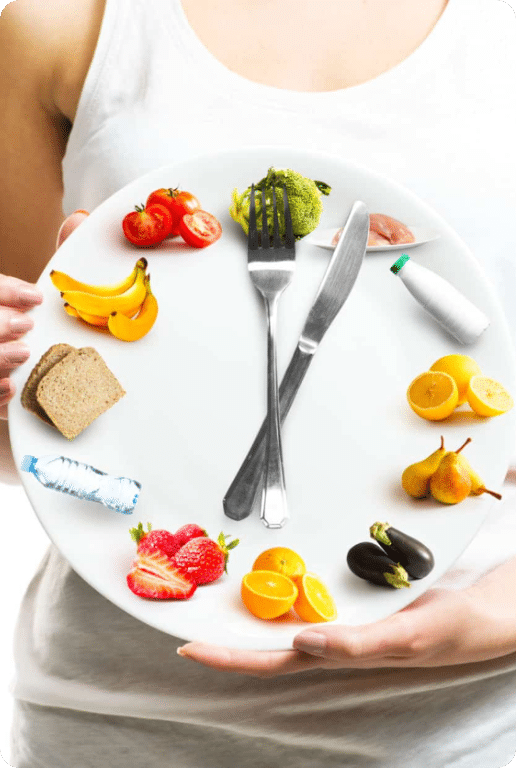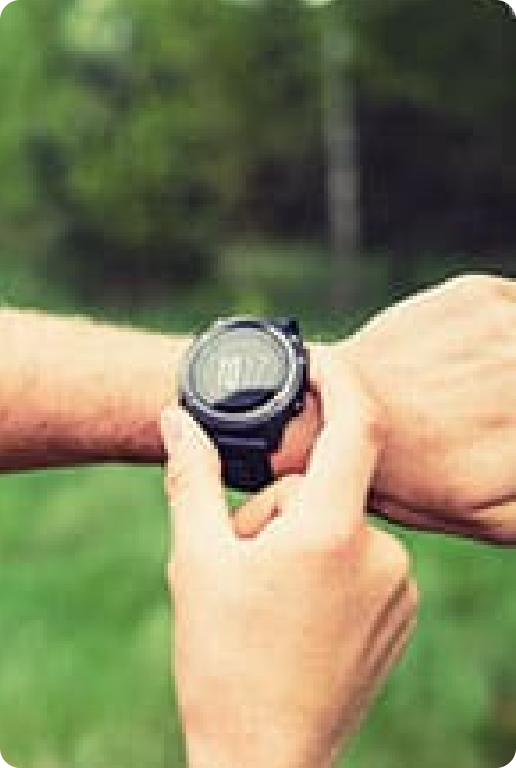It’s true: Sometimes working out makes you feel sore.
In fact, some of us equate that feeling of soreness with getting fitter and stronger. And you know what? We’re not necessarily wrong about that.
But that soreness – called Delayed Onset Muscle Soreness (DOMS), which is the stiff, dull pain that can come after your workouts – shouldn’t get in the way of your daily activities or even your next workout.
I’m going to show you some ways to ease DOMS, improve your workout recovery, and use the entire process to get fitter and stronger, faster.
What Is Delayed Onset Muscle Soreness?
DOMS is a very specific type of pain (1).
As its descriptive name suggests, DOMS is the type of soreness felt in your muscles that occurs 12 to 24 hours after a workout.
However, DOMS can make an appearance up to 48 hours after you leave the gym.
DOMS is not an acute pain – you don’t feel it during the actual workout. As I’ll explain later, that’s an important distinction.
In addition to the characteristic soreness of DOMS, other symptoms could include:
- swelling of the affected limbs,
- temporary reduction in a joint’s range of motion,
- tenderness to the touch, or
- temporary reduction in the strength of the affected muscles.
What Causes Delayed Onset Muscle Soreness?
I know people don’t like to think about it this way but, even when you do it correctly, exercise damages your muscles.
But that’s actually a good thing.
When your body repairs that damage, your muscles get stronger. So, even though we like to think our workouts themselves make all the difference in our fitness, it’s actually the time between the workouts that the magic happens.
Here’s how it works: When you go perform the activities of your regular everyday life, your body isn’t challenged in any significant way. It has no reason to change.
When you exercise, though, you’re putting your body through an experience that it finds difficult. In fact, your muscles actually endure microscopic tears.
Your brain doesn’t like that, and basically decides, “I better make that muscle stronger so that this doesn’t happen again.”
Between workouts, then, your body launches into repair efforts, increasing blood flow to the affected muscles so all the necessary materials are available.
And, while those tears are being repaired and the muscle fibers are being rebuilt, the muscle is sore and slightly inflamed.
That is the DOMS you feel.
So, while pain is generally a signal that something is wrong and needs to change, the soreness associated with DOMS is actually a good thing.
It means that your muscles are improving.
Delayed Onset Muscle Soreness Relief
Still, soreness is soreness – even when you try to have a positive attitude about it.
How can you ease that pain? Is there some sort of delayed onset muscle soreness treatment you can use?
Unfortunately, no.
But there are some tricks you can use to help reduce the symptoms of DOMS, particularly if they’re severe enough to get in the way of your regular routine.
1. Omega-3 Fatty Acids
Generally found in the form of fish oil supplements, this important category of fats offers tons of benefits. But, in keeping with our theme, let’s focus on their potential as an anti-inflammatory.
Some of the discomfort associated with DOMS is simple inflammation.
Studies have shown that fish oil supplements can help to reduce certain markers of inflammation in the human body.
It would make sense, based on that, to assume that fish oils can help to reduce the symptoms of DOMS. But, does science back this up?
It would appear so. A 2009 study published in the Clinical Journal of Sports Medicine asked 27 untrained men to go through a leg workout (2).
Before the workouts, range of motion, perceived pain and muscle circumference were all measured to set a baseline. The volunteers were then given either 1.8 grams of omega-3s, a placebo or nothing.
The same measurements were repeated again immediately following exercise, and again after 24 and 48 hours.
Interestingly, the omega-3 group experienced a reduction in swelling 24-hours after the workout. While they also experienced improvements in range of motion and pain, this didn’t kick in until 48 hours later.
Meanwhile, the placebo and control group showed no benefits.
[Related: 19 Anti-Inflammatory Foods You Should Eat Each Week]
2. Foam Rolling
Essentially, a form of self-massage, foam rolling is exactly what it sounds like: You roll a foam cylinder over your muscles.
In addition to working out the knots formed in muscle tissue while they’re under tension, this may also help to flush waste from your muscles more efficiently. And, with all that out of the way, your muscles can enjoy a more thorough recovery.
Backing this up, a 2015 study in the Journal of Athletic Training asked male volunteers to go through a squat workout and a variety of performance tests (3).
Some of the subjects also performed a foam rolling routine immediately, 24 hours and 48 hours after the workout.
Not only did foam rolling reduce muscle soreness, but it also improved the subjects’ performance in dynamic movements like jumping and sprinting.
[Related: 5 Unusual Foam Roller Exercises for Tight Spots]
3. Light Activity
Yes, I am going to tell you to workout even when your sore. With a few caveats, of course.
First, if you plan on moving the affected muscles, do so at a much lower intensity than you normally would.
Even if the muscle is sore, this light activity can help to stimulate more blood flow to the stiff muscles, allowing more oxygen and nutrients to reach the affected area.
The trick is just to keep the intensity low enough that you don’t cause more damage.
If your legs are sore from the previous day’s workout, for example, a brisk walk and some light dynamic stretching would be perfect. But you wouldn’t want to load up the bar for squats.
4. Take a Warm Bath
Again, workout recovery is largely about releasing tension and encouraging blood flow. And a relaxing bath in warm water does both of these things incredibly well.
[Related: Sore Muscles? Try These Homemade Bath Bombs]
Just be careful that the water isn’t overly hot and that you stay hydrated.
5. Sleep
Although we tend to take it for granted, sleep is your primary means of recovery. When your muscles are sore and your body is working hard to get them back in working condition, it’s absolutely vital that you get plenty of sleep.
While most people tend to stick to the standard eight hours each night recommendation, this may not be true for everyone – especially if you’ve been working harder than normal.
Simply put, you may need to just listen to your body when it comes to sleep. If you get eight hours a night and still feel tired, sleep more. However, if you’re regularly getting 8 hours a night and are still feeling tired, you may have some adrenal issues.
Workout Recovery Matters
Fitness progress in general is really about workout recovery.
When you exercise, you’re sending a message to your brain that those muscles need to be bigger, stronger, and faster. DOMS is part of the process.
But by making sure your body has everything it needs to get that work done quickly and efficiently, you can reduce the severity of soreness you experience.
Feeling Beat Up By Your Workouts?
We know that DOMS is part of the recovery process, but that doesn’t mean you have to walk around feeling stiff and sore all the time.
If you’re looking for even more relief, check out my free Workout Recovery Formula, which features 11 overlooked post-workout strategies to speed recovery, reduce stiffness, and help you feel unstoppable. Download it now – for FREE – by clicking the banner below.

